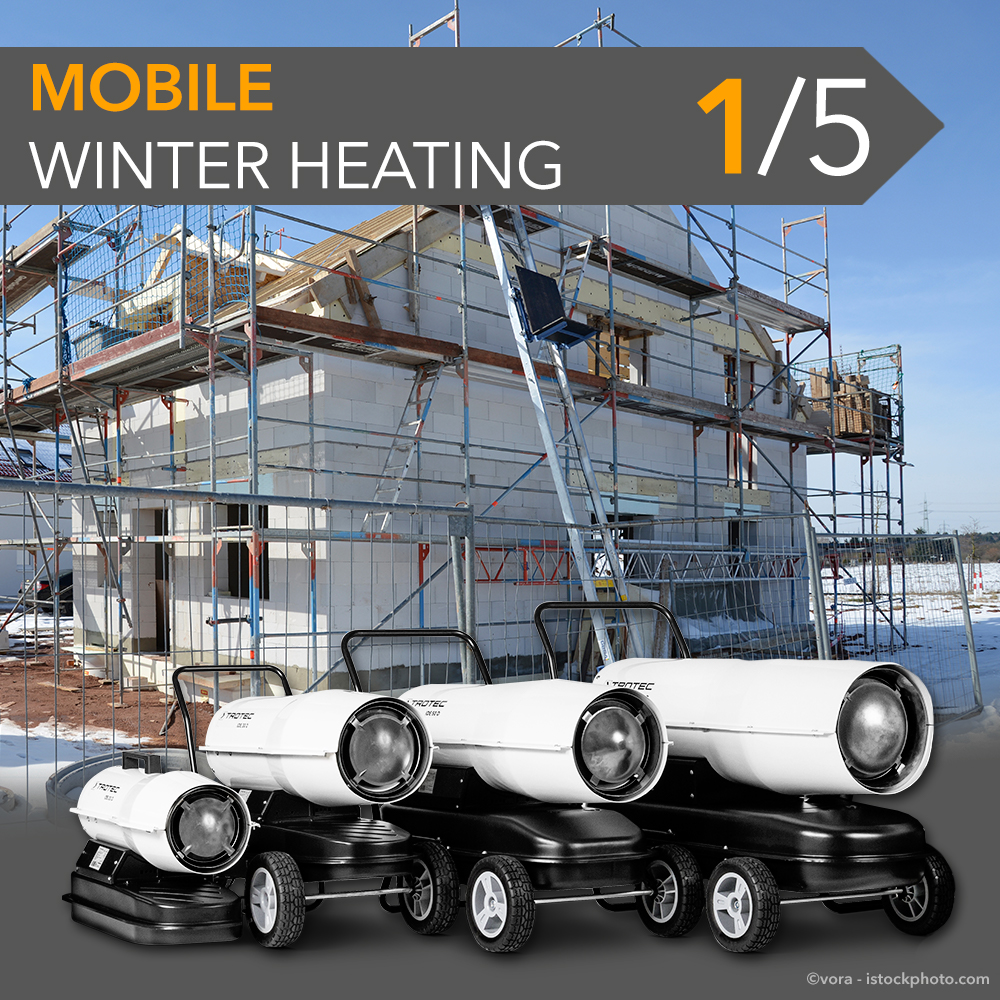 Winter is approaching quickly. So it’s high time for our adviser series on the subject of ‘mobile heating’. Discover which type of heater is best suited for which purpose. Under which circumstances you can also set up a heater outside your home. And how to calculate the heat output actually required based on the size of the room. Let’s start with the advantages that an ‘direct oil heater’ offers – in the coming instalments we will compare them with those of indirect oil heaters and electric heaters.
Winter is approaching quickly. So it’s high time for our adviser series on the subject of ‘mobile heating’. Discover which type of heater is best suited for which purpose. Under which circumstances you can also set up a heater outside your home. And how to calculate the heat output actually required based on the size of the room. Let’s start with the advantages that an ‘direct oil heater’ offers – in the coming instalments we will compare them with those of indirect oil heaters and electric heaters.
Mobile heaters not only make the winter cold bearable, but also bring pleasant temperatures into building shells, warehouses or cattle sheds. Depending on their intended application in construction or industry, in agriculture or for various services, however, very different requirements are placed on the heaters. Do you only want to heat a building during the construction phase, or do you also want to dry it quickly? Do you need to heat well-ventilated winter construction sites, or do you need temporary accommodation, such as tents, to be kept at a comfortable temperature?
There is an optimal heater for every individual application. In order to decide which heaters are best suited for which application, we will first take a closer look at the three most common types: direct and indirect oil heaters and electric heaters. Let’s start with the direct oil heater: how does it work and what requirements is it best suited for?
Direct oil heaters – function and operating conditions
In a directly heated oil heater, the fan also supplies the combustion air and then blows out the heated air. To do this, fuel is first atomised, ignited and burnt in the combustion chamber. The hot gases are then mixed with the main air flow of the fan in a precise dose.
Besides heat, direct heaters emit all combustion gases directly into the room as well. This is why direct heaters have no chimney and are unsuitable for closed rooms without good ventilation – especially when people and animals are in the room. Because a lot of moisture is also released during combustion, direct heaters should never be used to dry buildings.
Direct oil heaters, on the other hand, are ideal for outdoor use or in well-ventilated interiors because they provide all of the generated heat. This process is therefore also referred to as 100% heat output.
Good to know: Direct oil heaters…
- are ideal for outdoor use
- generate 100% heat output
- emit combustion gases directly
- are unsuitable for closed rooms
- should not be used to dry buildings
More information on direct oil heaters from Trotec
An all-in one price and heating cannon – that’s how Trotec’s IDE oil heater fans are aptly described. With heating outputs between 20 kW and 60 kW, they are regarded as both economical and reliable solutions for typical mobile heating applications at construction sites, in halls and workshops as well as in agriculture. More information is available online – in our Trotec-Shop!
Your overview of Trotec’s Mobile winter heating’ adviser
1/5 What you should keep in mind with ‘direct oil heaters’
2/5 What advantages so-called ‘indirect oil heaters’ offer
3/5 Why electric heaters heat the safest and fastest
4/5 How heaters can also be set up outside the home
5/5 How the required heat output is calculated

